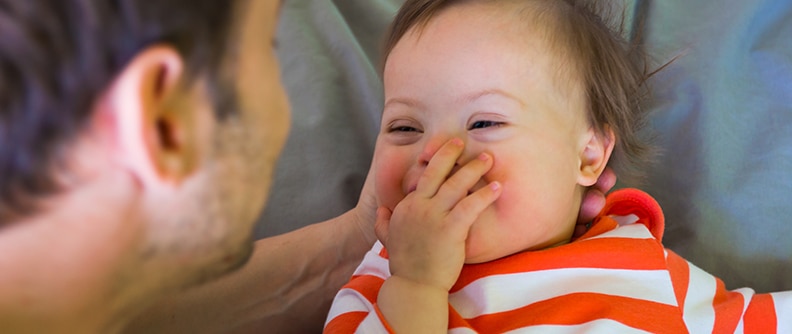Your baby’s senses were taking in their environment in the womb and have been taking in everything since they were born. Seeing, hearing, smelling, touching, and tasting all help your baby settle into their new world.
What can your baby sense after birth?
Even though some of your baby’s senses are fully developed, others continue to develop as they interact with you and the world around them. After birth, your baby can see perfectly up to 8-12 inches away. When you hold them in your arms, that’s about the distance to your face, their favorite thing to look at. Babies can also sense both dark and light and are often interested in bold, contrasting colors or patterns.
After your baby is born, they recognize your voice and other common sounds they heard the womb. It’s a good idea to talk and sing to your newborn as you get to know each other. Newborns are often comforted by familiar, rhythmic sounds like heartbeats, humming, or the sound of a fan or vacuum cleaner. Calming “white noise” is preferred by babies over louder sounds.
Your baby became familiar with the taste of the amniotic fluid you made from the foods you ate during pregnancy. Newborns recognize the tastes and smells of their mother and are drawn to the breast milk that you are producing for them.
In the womb, your baby was kept warm and safe. Research shows the best way to maintain a newborn’s body temperature is by keeping them skin-to-skin as often as you can. This bonding time together can help them feel secure, build healthy attachment, stimulate milk production, and improve breastfeeding.
What activities can you enjoy together?
Even though there’s a limit to what a newborn can do, you can still have fun together. Playing with them is a great way to stimulate brain development and teach them skills that will last a lifetime.
When your baby is awake and alert, try activities such as:
Playing with puppets. It’s easy to make a hand puppet out of a sock. Move it around where your baby can see it. You can make the puppet talk or sing to your baby. The puppet can even give them gentle kisses.
Dancing. Try gently dancing with your baby on your shoulder. This helps your baby learn to tolerate pressure on the stomach. Plus, the movement is enjoyable.
Pat-a-cake. Gently holding and clapping your baby’s hands together engages their senses of touch, hearing, and seeing.
Tummy time. Your baby should have a little tummy time each day. Try lying down on the floor with your baby. Your baby can see and hear you, so experiment with making faces, sticking out your tongue, or making funny noises.
When your baby’s a little older, you can take your activities up a notch. Try:
Getting the little piggies. Hold your baby’s foot and give a gentle wiggle to each toe. You can sing “This Little Piggy” while you do it!
Ride the horse. While sitting on the floor, have your baby sit on your raised knees. While supporting your infant, slowly move your legs from side to side. This mimics the gentle rocking motion of horseback riding.
Crocodile rock. Hold your baby tummy down on your chest. Then, rock your body from side to side.
Playing with blocks. Stack some blocks in front of your infant and encourage them to knock them over. Many babies love to see and hear the blocks falling down.
